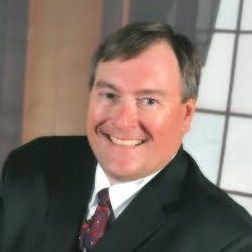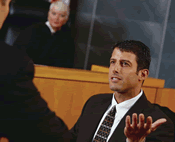- Home
- About
- Courses
- IR/INFO CONFERENCE
- Software
- EXPERT SERVICES
- STANDARDS
- Proposal Templates
- Electrical Systems & Rotating Equipment
- Building Envelopes
- Insulated Roofs
- Photovoltaic Systems
- Pest Detection
- Yachts and Small Craft
- Thermal Imaging of Horses
- Optical Gas Imaging
- Measuring Reflected Temperature
- Measuring Emittance
- Measuring Transmittance
- Distance/Target Size Ratios
- Complete Series
- Resources
- BUSINESS OPPORTUNITIES
- STORE

Director’s Message

Unlike contact thermometry, infrared temperature measurement is subject to several error sources. Although emissivity is familiar to many, another common error source is reflectivity. In order to compensate for errors due to reflections, imaging and non-imaging radiometers have inputs for entering Reflected Temperature. Depending upon the make and model of the instrument, this control may be referred to as TAM, Ambient Temp, Background, or Reflected Temperature.
Since all real world objects have emittance values of less than 1.0, some infrared energy will always be reflected from a measured object’s surface. The Reflected Temperature feature found on radiometers will mathematically compensate for this error source provided that it has been properly set by the operator.
Listed below are the general steps for measuring and compensating for Reflected Temperature when using an imaging radiometer and a diffuse infrared reflector. A diffuse reflector can be made from a crumpled and re-flattened sheet of aluminum foil that has been wrapped around a piece of cardboard.
- Place imager at desired location and distance from object to be measured
- Aim and focus imager
- Place diffuse reflector in front of, and in same plane as, object’s surface
- With imager’s E control set to 1.0, measure apparent temperature of diffuse reflector
- Conduct procedure three times and average results
- Enter averaged value into radiometer’s Reflected Temperature input
When measuring Reflected Temperature, make certain to maintain a safe distance from any hot or energized targets and observe all necessary safety precautions. When entering Reflected Temperature into your radiometer, be sure to access the proper menu as some imagers have inputs for Reflected Temperature as well as ambient air temperature.
Expert Witness Services

As thermography has matured, its usage as legal evidence has increased. Due to its graphic nature, thermal imaging is now regularly utilized in criminal and civil cases by both plaintiffs and defendants. Whether you are defending a claim or seeking to use thermography as evidence, you need a qualified expert on your team.
With nearly 40 years experience in thermography and non-contact temperature measurement, Infraspection Institute have the qualified experts that you need. Our personnel are highly experienced, Level III practicing thermographers with expertise across a broad range of infrared applications. In fact, they have co-authored many of the application and equipment standards that enjoy worldwide use today.
Whether you are an attorney or a party to a case involving thermography, we invite you to give us a call. We will review your case with you and answer any questions that you may have. We guarantee that you will not find more qualified experts anywhere else.
Standards for Infrared Inspections

At present, Infraspection Institute publish the most comprehensive list of standards for infrared thermography. Coauthored by numerous expert thermographers, these standards outline industry best practices and are updated regularly to reflect current trends and technology.
Eleven comprehensive standards covering equipment operation, temperature measurement, and specific thermographic applications are available from Infraspection Institute. Each standard provides simple and straightforward procedures along with the requirements for properly documenting test results. These documents are a ‘must-have’ for anyone who specifies, performs, or oversees infrared inspections.
Call for Papers for IR/INFO 2019

Infraspection Institute are pleased to announce that our annual Advanced Training Conference, Technical Symposium and Technology Expo, IR/INFO 2019, will be held January 20 – 23, 2019 in New Orleans, Louisiana. Now in its 30th year, IR/INFO features four days of networking, learning, and fun in a relaxed, yet professional, family atmosphere.
We are presently seeking papers and presenters for IR/INFO 2019. Invited topics include, but are not limited to: safety, emerging applications, building sciences, related NDT, case histories, as well as tips and tricks.
Presentations are typically 20-25 minutes with 5 minutes for questions and answers with the audience. All papers and presentations will be published in the IR/INFO Conference Proceedings. The deadline for abstract submissions is July 31.

Professional Curriculum
Infraspection Institute instructors use extraordinary techniques to deliver stimulating, effective, and relevant instruction. All of our instructors are highly experienced, practicing thermographers. Each brings years of unmatched, real-world experience to the classroom. Our courses are taught using a combination of dynamic multi-media presentations, hands-on demonstrations and one-on-one interaction with students. Our courses integrate theory, practice, and case studies in a fun, relaxed atmosphere designed to maximize your learning experience.

